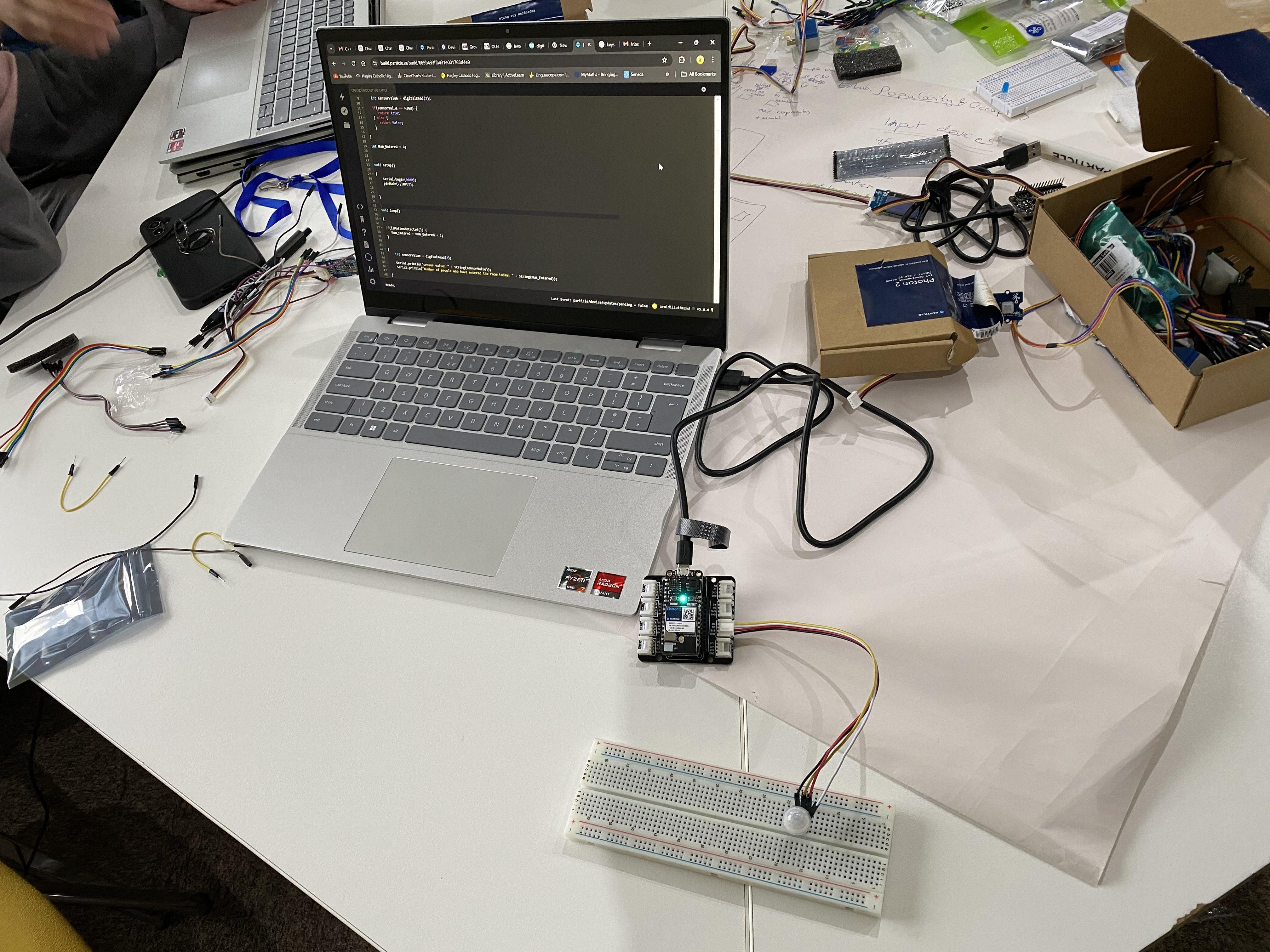Evaluating the popularity of museum exhibitions through recording the number of visits to individual exhibitions per day. Also, monitoring live occupancy of each exhibition to aid visitors who are sensitive to crowded and noisy places.
TNMOC relies heavily on sponsorship and to support applications for sponsorship, it is useful to evidence to sponsors the popularity of the museum and individual exhibitions. Our project, helps monitor how many visitors each exhibition receives per day and this data can show sponsors the popularity of the exhibition.
To achieve this, two IR receiver and emitter pairs are used. The IR emitter continuously sends the IR signal to the IR receiver. When a person walks into an exhibition, the IR signal to the IR receiver is broken. The counter value increases by one.
As an extension to our original idea, we recognises that we could develop the code to count how many visitors entered an exhibition and also exited the exhibition, therefore, we could display a live count of people in each exhibition room. This is useful for people who have additional needs, for example, people with autism, where they could be sensitive to crowded situations and loud noises. By showing the maximum occupancy of an exhibition and next to it, a live count of how many people are already in the exhibition, it enables them to make an informed decision an whether they wish to enter the room.
The use of two IR receiver and emitter pairs, means that two lines of IR signals are produced and received. Depending on the order that the IR signals break (line 1 then line 2 or vice versa) will determine whether a visitor is entering or exiting the exhibition. Developing the live count idea further, we decided that a traffic light system, where a light outside the exhibition would show flashing red light when maximum occupancy has been reached; Amber light when occupancy has reached half way and when occupancy is less than half, a green light would show. This makes the information easier to understand as most people associate red for stop and green for go. Further, we considered people who are colour blind, hence the red is a flashing light, rather than a steady light.
Unfortunately, due to technical difficulties, we were unable to complete this project exactly as planned. The voltage required for the IR emitter and receiver is 5V but the Photon 2 can only run on 3.3V. The idea was adapted and the IR emitter and receivers have been replaced by mini PIR motion sensors. The sensors would be placed just after the entrance to the exhibition.









Comments